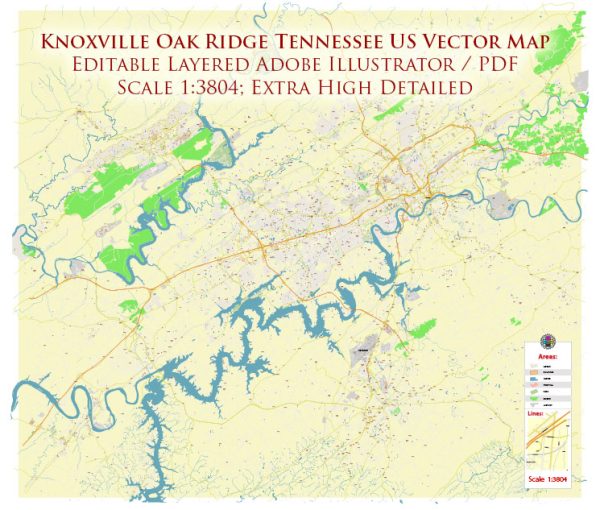Knoxville and Oak Ridge, both located in East Tennessee, have unique histories of urban development that reflect the broader historical and economic trends in the United States.
Knoxville:
- Early Settlement and Growth:
- Knoxville was first settled in the late 18th century and became the capital of the Southwest Territory in 1792.
- The city grew as a transportation hub, with the Tennessee River facilitating trade and commerce.
- The arrival of the railroad in the mid-19th century further fueled economic development.
- Civil War Impact:
- Knoxville played a strategic role during the Civil War, being a key target for both Union and Confederate forces.
- The city witnessed significant destruction during the war, but it rebounded in the post-war years.
- Industrialization and Economy:
- The late 19th and early 20th centuries saw industrialization, with Knoxville becoming a center for textile and manufacturing industries.
- The Tennessee Valley Authority (TVA), established in the 1930s, contributed to the region’s development by providing electricity and promoting economic growth.
- Urban Renewal and Revitalization:
- Like many American cities, Knoxville experienced urban renewal efforts in the mid-20th century, which involved demolishing older buildings in favor of modern developments.
- In recent decades, there has been a focus on revitalizing downtown areas, preserving historic structures, and promoting cultural amenities.
Oak Ridge:
- Manhattan Project and World War II:
- Oak Ridge was established in 1942 as part of the Manhattan Project, a top-secret government initiative to develop the atomic bomb during World War II.
- The city’s rapid development was driven by the need for a secure location for nuclear research and production.
- Post-War Period and Scientific Research:
- After the war, Oak Ridge continued to play a vital role in scientific research and nuclear technology development.
- The Oak Ridge National Laboratory (ORNL) became a major research facility, contributing to advancements in various scientific fields.
- Economic Impact and Diversification:
- The presence of ORNL and other associated facilities has had a profound economic impact on Oak Ridge, providing jobs and contributing to the local economy.
- In recent years, efforts have been made to diversify the local economy and attract industries beyond nuclear research.
- Environmental Stewardship:
- Oak Ridge has also faced challenges related to environmental stewardship, as the legacy of nuclear research includes concerns about contamination and waste management.
In summary, Knoxville’s history is characterized by its early role as a regional center, industrialization, and later efforts at urban renewal. Oak Ridge, on the other hand, has a unique history tied to its establishment for the Manhattan Project, subsequent scientific research, and ongoing efforts to balance economic development with environmental concerns. Both cities contribute to the rich tapestry of East Tennessee’s urban and industrial history.


 Author: Kirill Shrayber, Ph.D.
Author: Kirill Shrayber, Ph.D.